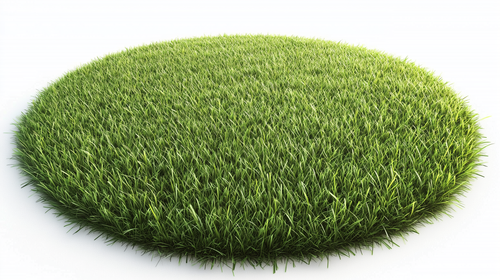TERRALIFT T-THATCH
T-Thatch uses targeted enzymes and beneficial microbes to help manage organic matter, support firmer surfaces, and improve rootzone conditions without the need for aggressive mechanical intervention.
Thatch buildup is one of the most persistent challenges for golf course managers.
As organic material accumulates near the surface, it can compromise firmness,
block water and nutrient flow, and create an ideal environment for disease. Traditional methods like scarifying and aerating have their place, but often
require downtime and disrupt playing surfaces.
T-Thatch is a two-part liquid treatment developed to support the breakdown of organic matter in the upper rootzone. It combines decomposing enzymes with soil-compatible microbes to assist in managing thatch biologically. T-Thatch is used as part of routine cultural maintenance programs to help manage thatch and organic matter with
minimal disruption to surface conditions.
What is Thatch and Why It Matters
Thatch is the layer of dead and decaying organic material that forms between the turf canopy and the rootzone. It is primarily composed of stems, roots, and other plant debris that fail to decompose quickly enough. A moderate thatch layer can provide some insulation and resilience to wear, but when it becomes excessive, it interferes with turf performance and surface quality.
On golf greens and other intensively managed turf surfaces, excess thatch holds moisture, restricts air movement, and slows nutrient flow into the rootzone. This creates soft, damp conditions at the surface and encourages the horizontal growth of roots. These conditions not only affect playability, such as ball roll and firmness, but also increase the risk of disease and black layer formation.
When thatch builds up alongside topdressing sand and surface moisture, it becomes a dense, spongy mass that traps nutrients and inhibits healthy soil function. Managing thatch effectively is essential for maintaining consistent surface performance and promoting long-term rootzone health.
Traditional Thatch Control Methods
The most common approaches to managing thatch involve mechanical disruption, including scarification, hollow tine aeration, and verticutting. These methods physically remove or displace the thatch layer and are typically carried out during renovation or maintenance windows when play disruption can be managed.
Scarification involves slicing through the turf to lift and remove fibrous organic matter. Hollow tine aeration extracts small soil cores to relieve compaction and increase oxygen flow. While both methods are effective in reducing thatch, they require downtime, additional labour, and can cause surface instability during recovery.
Topdressing is often applied after mechanical work to dilute residual thatch and restore surface levels, but without consistent organic matter breakdown, thatch can quickly
re-accumulate. These practices remain important tools, but they are increasingly supplemented by biological methods that target the cause of thatch rather than just
the symptoms.
The Biological Advantage - Enzymes and Microbes
While mechanical methods remove thatch by force, biological approaches aim to support its natural decomposition within the soil. These solutions rely on specific enzymes and microbial populations that help accelerate the breakdown of organic matter without disrupting the turf surface.
Enzymes act by breaking down complex organic molecules into simpler forms. When applied to thatch, decomposing enzymes begin to soften and pre-condition fibrous material, making it more accessible to soil microbes. Beneficial microbes then metabolise this material, converting it into stable forms of organic matter that contribute to long-term soil health.
T-Thatch applies this principle using a two-part liquid system. One part delivers a targeted enzyme formulation designed to break down organic residues. The second introduces humus-converting soil microbes that aid in the decomposition process and contribute to rootzone balance. This biological activity works continuously between applications and integrates with routine turf maintenance.
By supporting the natural processes that reduce thatch, enzyme and microbial treatments offer a way to manage organic matter without the disruption or surface damage associated with mechanical interventions.
Introducing T-Thatch
T-Thatch is a two-part liquid treatment designed to assist with the biological breakdown of thatch and excess organic matter in managed turf. It works by delivering decomposing enzymes alongside humus-converting soil microbes, creating a biological process that targets fibrous material and organic matter in the upper rootzone.
The enzyme component softens and pre-conditions thatch, while the microbial component supports the digestion and transformation of this material and organic matter lower down into more stable forms. This combination promotes a firmer playing surface, improves water and nutrient movement, and helps reduce the conditions that favour black layer or disease activity.
T-Thatch is applied as part of ongoing turf maintenance programs, often in combination with scarification, topdressing, or other cultural practices. It is safe to soil biology, compatible with a wide range of turf management inputs, and can be used without affecting play.
Course managers across Australia and the UK have used T-Thatch to increase the volume of organic matter extracted during scarification, maintain consistent surface quality, and support overall rootzone performance.
How T-Thatch Works
T-Thatch is applied as a tank-mixed spray or drench and begins working at the surface level of the rootzone. The enzyme solution acts first, targeting fibrous material and initiating decomposition. This pre-conditioning step makes the material more accessible to microbial activity.
Once the second component is introduced, soil microbes colonise the upper rootzone and continue the breakdown process. These microbes convert softened organic residues into more stable forms of humus, reducing the volume of undecomposed material that contributes to thatch buildup and clogging organic matter in the upper rootzone.
For thatch reduction, apply 2 or 3 times around renovations (Spring and Autumn).
For recycling of seasonally produced organic matter, apply monthly at half rates.
Where possible, T-Thatch should be used in warm conditions and ideally watered in after spraying to ensure contact with the thatch layer and soil below.
When and How to Apply T-Thatch in Australia
T-Thatch is best applied during periods of active turf growth, typically from spring through autumn in most Australian regions. Warmer temperatures and adequate moisture support both enzyme activity and microbial establishment.
T-Thatch Application Guidelines
Timing:
Thatch Reduction: Apply 2 or 3 times around renovations
Seasonal Maintenance: Apply monthly at half rates between September and April
Method: Boom spray or drench directly onto the surface
Watering In: Light irrigation after application helps move the solution into the target layer
Compatibility: Can be used in conjunction with scarification, topdressing, and other inputs
Typical Rate: 36 to 48 litres per hectare (depending on turf condition and program objectives). Half rate 12 to 24 litres per hectare.
For greens under high traffic or stress, more frequent applications may be considered.
For new users, initial trials on selected areas can help tailor rates and scheduling to site conditions.
Case Studies - Results from Real Greens
T-Thatch has been used successfully by turf managers in both Australia and the UK as part of programs aimed at improving surface firmness and managing organic matter.
At Loughrea Golf Club, a fairway trial compared plots treated with T-Thatch against untreated areas. When scarified, the T-Thatch-treated plots removed 77.2 kg of organic matter per green, while the untreated areas removed 33.2 kg. This increase in material lifted suggests that T-Thatch supported the breakdown of organic debris before mechanical intervention.
At Northenden Golf Club, T-Thatch was introduced to help manage a long-standing thatch issue. Over time, the course manager reported more consistent green firmness and reduced surface disruption during renovation periods. The product was used in conjunction with existing practices to maintain control over organic accumulation.
Shipley Golf Club incorporated T-Thatch into its cultural maintenance routine and observed an increase in surface firmness. The course manager noted the ease of integrating the product and its role in supporting ongoing program goals.
Why Australian Turf Professionals
Choose T-Thatch
Turf managers are continually looking for ways to maintain high-quality playing surfaces while managing labour, play schedules, and environmental pressures. For many, T-Thatch offers a practical addition to their turf maintenance toolkit.
It supports the biological breakdown of organic matter, helping to reduce reliance on disruptive mechanical practices like deep scarification. When used alongside established programs, T-Thatch can assist in managing surface softness, improving infiltration, and maintaining a more consistent rootzone profile.
Its compatibility with standard turf practices - including topdressing, wetting agents, and renovation inputs - allows for flexible use across varying site conditions. Managers have also noted that T-Thatch can be applied without impacting play, making it easier to schedule around busy periods.
The decision to use T-Thatch often comes down to its ease of integration, support for existing strategies, and its contribution to long-term organic matter control.
Frequently Asked Questions
Q: Does T-Thatch replace the need for scarifying or aerating?
A: No. T-Thatch is designed to complement, not replace, physical methods. It supports organic matter breakdown between renovation cycles and may reduce the severity or frequency of mechanical intervention over time.
Q: How long does it take to see results?
A: T-Thatch works biologically and progressively. Course managers typically report improvements in surface condition and organic matter reduction over a period of 2 to 3 months with regular use.
Q: Is T-Thatch safe for soil microbes and roots?
A: Yes. T-Thatch is formulated with soil-compatible microbes and is safe to use as part of programs that support soil biology and rootzone health.
Q: Can I use T-Thatch with other turf products?
A: Yes. It is compatible with most wetting agents, topdressing programs, and biological inputs such as Rocastem.
Q: When is the best time to apply T-Thatch?
A: Apply during active turf growth, typically from Spring through Autumn. Moisture and warmth help activate the enzymes and support microbial activity.
Q: How often should I apply it?
A: Apply 2 or 3 times per year at full rates or monthly at half rates, depending on turf conditions and management goals.
Take the Next Step in Thatch Control
Whether you're managing high-performance greens or maintaining playable surfaces under pressure, T-Thatch offers a practical, biological solution for controlling organic matter without disrupting play.










